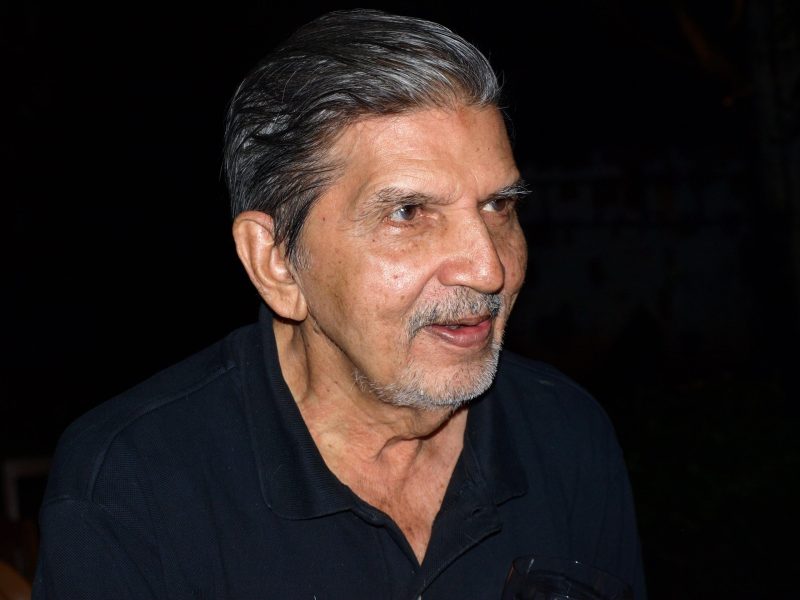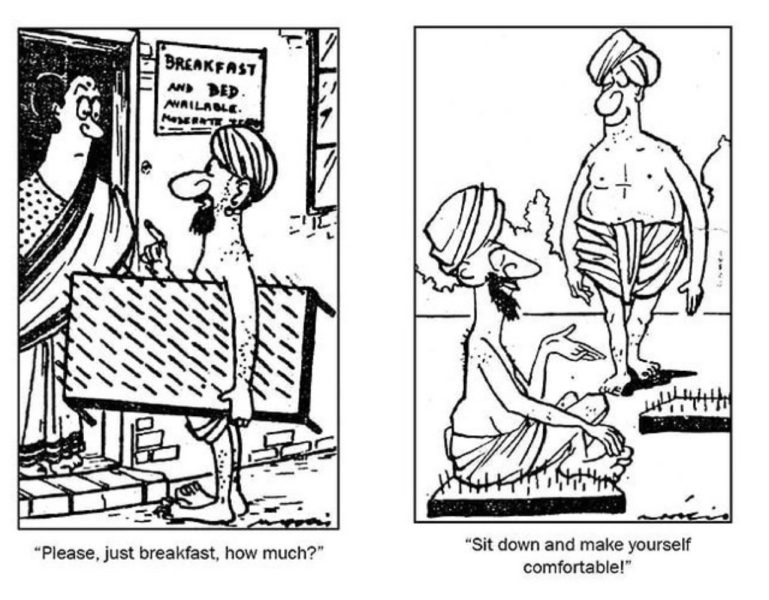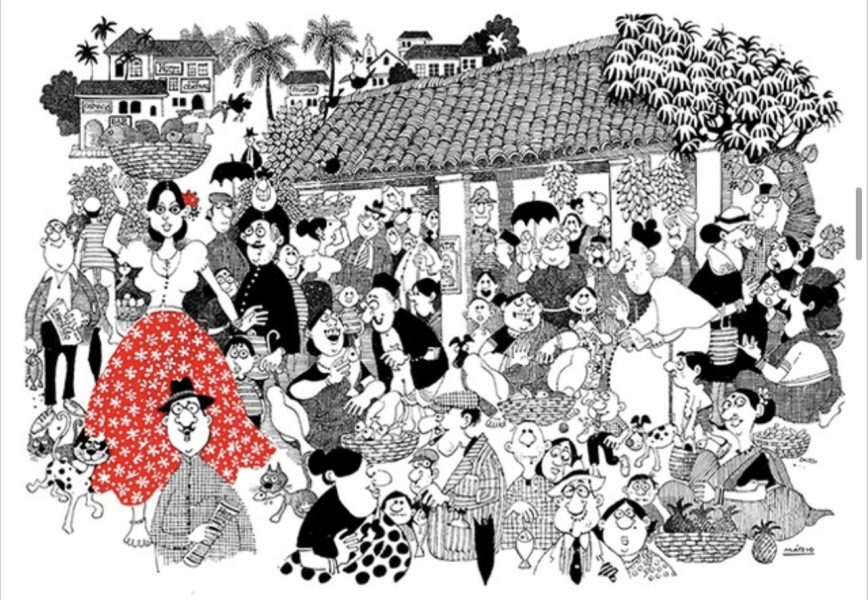
Why cartoonist Mario Miranda’s gallery is threatening to sue Goa government

The ‘unauthorised’ use of cartoonist Mario Miranda’s artwork during the G20 event in Goa recently has sparked controversy, with his sons threatening to sue the BJP government for the infringement. “One large caricature and two life-size figurines have been placed in Old Goa and Dona Paula, respectively, without our permission,” Gerard da Cunha, well-known architect and curator of the Mario Gallery — which serves as a custodian of Miranda’s legacy — told The Federal.
“We are sending a legal notice to the chief secretary (Puneet Kumar Goel), nodal officer and the party which was assigned to do this,” said Da Cunha, who works closely with the artist’s two sons, Rishaad and Raul Miranda, in protecting and promoting Miranda’s vast body of work. Earlier, G20 nodal officer Sanjith Rodrigues told news agencies: “We have done our due diligence. If we are served with a notice, we will respond to it.” In his response, Da Cunha asserted: “Let’s see how they react. I’ll sue them if they don’t agree.”
Expressing his frustration over the lack of respect for intellectual property in India, he said, “Everybody thinks they can copy anything. The government thinks they can do more than anybody. They believe that they are the owners of the world. It’s important for me to warn people that they have to seek our prior approval. You just can’t do whatever you want to do with intellectual property.”
A life less ordinary
The Mario Gallery, established by the Miranda family in 2011, is dotted across five locations in Goa: Porvorim, Panjim, Calangute, Margao and Carmona. It undertakes activities such as publishing books, organising exhibitions, selling original paintings, authenticating Mario’s works and granting permission for their usage.
Over the years, it has organised exhibitions in cities like Bangalore and Mumbai, showcasing different aspects of Miranda’s work, including his cartoons and his depictions of Bombay and Goa, the two places that are at the core of his artistic quests.
Da Cunha, a long-time associate of Miranda, collaborated with him for many of his books, including The Life of Mario: 1949, a compilation of caricatures drawn by Miranda when he was 23; the third in a series that includes the years 1950 and 1951, the book was released in 2007. He was actively involved in supporting the artist and his family, particularly during his battle with Parkinson’s disease.

Born in Daman, Miranda spent most of his life travelling, and in Bombay. He worked tirelessly even in his late years until he was hamstrung by his ailment. In 1996, he returned to Goa, where he lived at his ancestral home at Loutolim.
After Miranda’s death in 2011, the gallery not only served as ‘an altruistic effort’ to protect his legacy, but also sustained the family by generating income through the sale of prints, paperweights, and other merchandise, Da Cunha said. After Miranda’s wife Habiba — also an artist, she came from Hyderabad’s royal Hydari family — died in 2021, their two sons have become the sole heir apparent.
The chronicles of Mario Miranda
With over 13,000 drawings and 10 books (featuring his cartoons) to his name, Miranda was incredibly prolific. He developed his artistic skills from a young age and studied history and architecture before pursuing a full-time career in cartooning. “As a child he was asked to write a diary; everyday, he’d draw a picture. For many years, he carried the diary with him. When he went to Bombay, he was offered a job on the basis of his early works,” said Da Cunha.
Also read: Let’s wipe away signs of excesses of Portuguese rule: Goa CM
Miranda gained recognition through publications like The Illustrated Weekly of India and The Times of India; Later, his work appeared regularly in magazines such as Mad, Lilliput, and Punch. As a freelancer, he travelled around the world, from the United States to Paris, Germany and Australia. His talent and popularity led to international exhibitions and collaborations with renowned cartoonists, including Charles M. Schulz. He returned to India in the late 1980s and continued to contribute to Mumbai publications until his death.

With an uncanny ability to find beauty in the ordinary, Miranda confronted societal norms, gently poking fun at the idiosyncrasies of life in his works. He depicted bustling street scenes and crowded marketplaces in his illustrations, which were marked by a sharp wit and an incisive satirical commentary. His flat, interactive cartoons often portrayed everyday life and social interactions; the mores of doctors, policemen, housewives, and even fakirs. His creations such as the secretary Miss Fonseca, the minister Bundaldass, or Bollywood star Rajani Nimbupani reflected his keen observations of life.
Also read: After Kerala Story and Kashmir Files, Hindu body wants ‘Goa Files’ made
While Miranda is often labelled as a cartoonist, it falls short in capturing the true breadth of his talent. For he was an artist who expressed himself through his characters, as well as his paintings and simplistic sketches that paid homage to his beloved Goa. Mario’s Goa, a compilation of his finest works centered on the state, offers a glimpse into life in the 1950s. It is also an illustrated chronicle of Goan society.
From portraying life under Portuguese rule in the 16th century, the steamship journeys between Bombay and Goa and the essence of various locations to its skilful blend of caricature and portraiture, the book brings to life the state’s heritage, which faces threat amid attempts to alter its cultural identity. “One feels sad, but change is inevitable,” said Da Cunha, underlining how factors such as migration, tourism and environmental degradation have wreaked havoc with its character.

